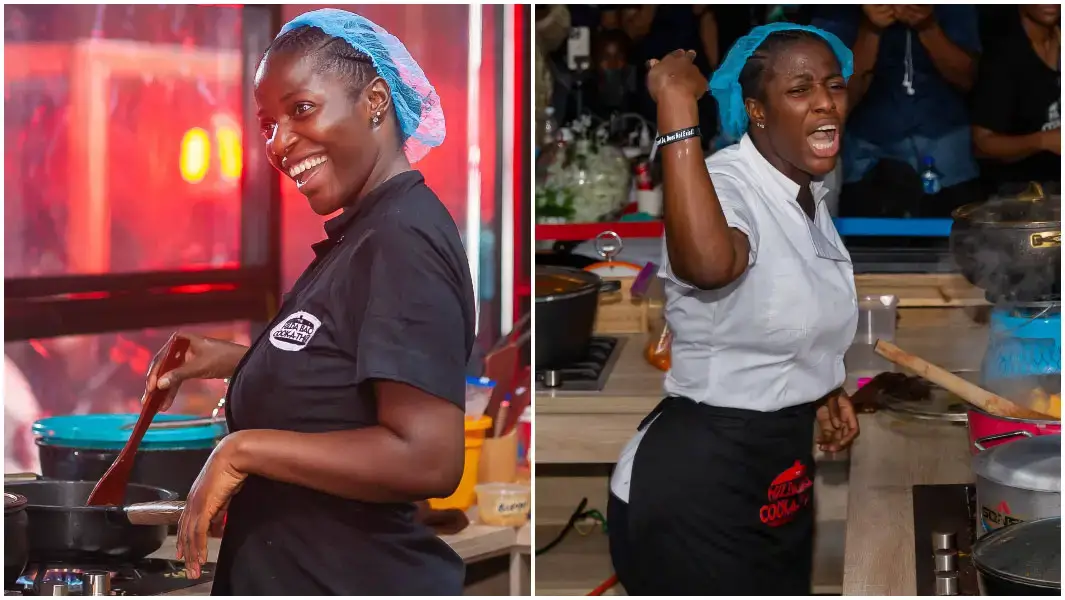By Tony Onyima, Ph.D.
Two years ago, Nigerian chef Hilda Baci made global headlines when she cooked for 93 hours and 11 minutes, setting a Guinness World Record for the longest cooking marathon. That audacious feat announced her as a woman with vision and an appetite for the extraordinary. Yesterday, she was back in the spotlight with an even bigger spectacle: the Gino World Jollof Rice Festival, where she attempted to set another record by cooking the world’s largest pot of jollof rice.
At the Eko Hotel & Suites, Lagos, Hilda and her team toiled for nine hours to prepare more than 22,000 litres of jollof rice using 4,000 kilograms of rice. Equipment constraints forced her to scale down from 250 bags to 200, but the result was still staggering. Over 20,000 people registered for the event, and more than 30,000 got a taste of the dish. While Guinness World Records is still reviewing the evidence, many argue that the real victory already belongs to Hilda’s brand.
Join our WhatsApp ChannelHer genius lies not just in cooking but in strategy. Marketing scholar Philip Kotler reminds us that powerful brands deliver more than products. They tell stories and create emotions. For nine months, Hilda built anticipation: commissioning a custom-made pot, planning a massive-scale distribution, and keeping audiences hooked online with every detail, from her sponsors to her spices.
Brand expert David Aaker once said, “Brands are built on consistency and relevance.” Hilda’s consistency in pursuing the impossible and her deep connection to Nigeria’s food culture meant that the world was watching long before the first burner was lit.
Perhaps most striking was her reliance on earned publicity rather than paid adverts. Celebrities thronged the venue, influencers livestreamed, and traditional media amplified the buzz all without heavy media spend. This “pull marketing” showed that audiences today want more than food; they want spectacle, pride, and drama. Hilda gave them all three.
For Gino, the headline sponsor, it was a marketing masterstroke. Its tomato paste and “Asun Jollof” seasoning were seamlessly tied into the event, creating what marketing theorist Kevin Keller describes as “the strongest brands create powerful, favourable, and unique associations.” Thanks to Hilda, Gino’s products are now emotionally linked to the biggest pot of jollof in history.
Hilda’s playbook offers lessons. First, audacity cuts through global noise; only bold ideas like a swimming-pool-sized pot of jollof can command worldwide attention. Second, partnerships matter. They turned ambition into triumph by aligning with Gino, mobilising suppliers, and rallying volunteers. Third, spectacle is currency. In the attention economy, unforgettable experiences dominate. And finally, authenticity beats ad spend. Hilda’s story was so compelling that people became her megaphones.
READ ALSO: Hilda Baci Secures Guinness World Record For Longest Cooking Marathon
The ripple effects went beyond food. Visitors flew in from across Africa, Europe, and North America. Hotels filled up. Airlines recorded a bump in traffic. For many, it was their first taste of Nigeria as a culinary tourism hub.
Culturally, Hilda may have settled the long-running “jollof rice war” among Nigeria, Ghana, and Senegal. With her monumental pot, she planted Nigeria’s culinary flag firmly in the ground.
Whether or not Guinness certifies the record, the Gino World Jollof Rice Festival has already delivered: boosting tourism, elevating a local brand, and turning a beloved dish into cultural diplomacy.
Hilda Baci has once again proven that success is not by chance. It is the result of vision, daring, and a pot of jollof big enough to feed the world.
Dr. Onyima teaches media at Paul University, Awka.










